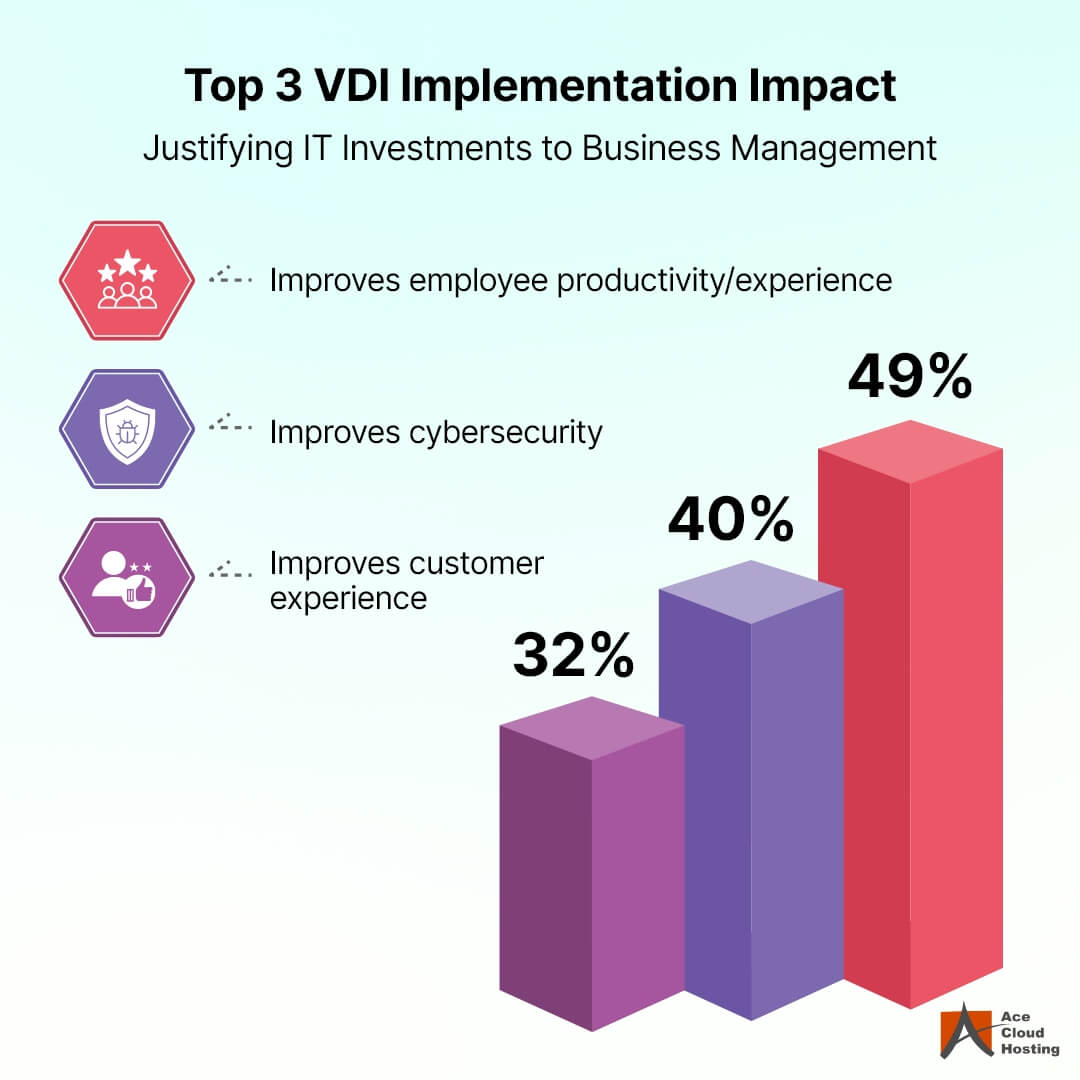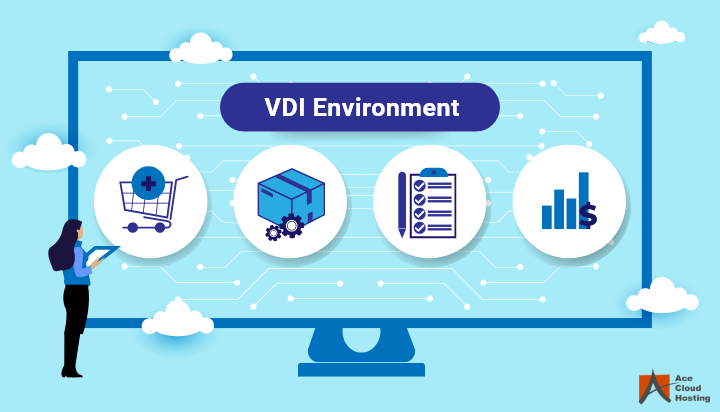Trying to figure out how Virtual Desktop Infrastructure (VDI) pricing works can be like playing the board game monopoly: confusing and complex with no clear path to victory. But in actuality, it doesn’t have to be so intimidating! By breaking down VDI pricing into understandable chunks, you’ll find that navigating the virtual world is not so difficult—especially while considering different models of VDI, such as pay-as-you-go, subscription-based plans, and the various user tiers available. So don’t worry about whether your finances are giving you a “deed,” here’s all you need to know about understanding what goes into VDI pricing.
Let’s look at this with an example:
You own a firm that works in design and application development. Now, you just heard the news of the remote working mandate, and all the organizations’ workforce is supposed to work from the office until further notice. Being an IT organization, we assume that every employee is already familiar with cloud technologies. Moreover, employees might sometimes use their devices to access company critical resources remotely. It would help if you implemented security and working-from-home policies that align with your organization’s goals while maintaining its finances. You opt for implementing a VDI solution.
However, there are multiple models by which a VDI system can be introduced. Which one suits your requirements? Just naming a system and technology isn’t going to work for the organization, and you need to think before integrating such an extensive system while performing a cost-benefit analysis simultaneously.
Get a Custom Quote Designed as Per your Requirement!
Here, creating a rundown of essential components to use for a VDI is the best practice. Lets’ check how:
Essential Components of Implementing VDI
There are two significant factors or components that organizations need to examine while evaluating VDI pricing models:
Considering User Rights
Users within your organization need a reliable solution with which they can work nonchalantly from anywhere. Meanwhile, organizations need employees to be discrete and protective while handling critical data. Hence, when implementing a virtual desktop infrastructure (VDI), it is important to consider the rights and privileges of the users accessing the virtualized environment. Here are a few key points to keep in mind:
- Access rights: The first step in considering user rights is determining who will have access to the VDI environment. This includes both internal employees and external users, such as contractors or partners. Establishing clear policies and procedures for granting and revoking access to the virtualized environment is important.
- Data security: Virtualized environments can make it easier for unauthorized users to access sensitive data. Therefore, it is important to implement robust security measures, such as encryption and two-factor authentication, to protect data stored within the virtualized environment.
- Network access: Users need access to the network resources required to perform their job functions. This includes access to applications, data, and other resources. Ensure that users have the appropriate level of access to these resources while also protecting against unauthorized access.
- Compliance: VDI environments must comply with various laws and regulations, such as the General Data Protection Regulation (GDPR) and the Health Insurance Portability and Accountability Act (HIPAA). Understanding the specific requirements of these regulations is crucial. Make sure that the virtualized environment is configured to meet these requirements.
- User experience: The virtualized environment should be designed to provide users with an experience similar to working on a physical desktop. This includes providing users with access to the same applications and data they are used to working with and providing a familiar interface.
- Backup and recovery: In case of any disaster, it is important to have backup and recovery plans in place to ensure that users can quickly resume their work in case of a problem. This includes regular backups of virtualized environments and disaster recovery procedures in case of a catastrophic event.

Considering Licensing Costs
Licensing in virtual desktop infrastructure (VDI) refers to obtaining and managing the licenses required to use the software and operating systems that are part of a VDI deployment. VDI deployments typically require licenses for the virtualization platform, such as VMware or Hyper-V, as well as licenses for the operating systems and applications running on the virtualized desktops.
Several licensing models can be used for VDI, depending on the organization’s specific needs. Some of the most common models include:
- Per-device licensing: This model requires a separate license for each device that will access the virtualized environment. This is often used for VDI deployments where only a small number of users will access the virtualized environment.
- Per-user licensing: In this model, you would have to register a separate license for each user accessing the virtualized environment. Mostly, mid to big-size enterprises use a per-user licensing model for VDI deployments where many users will be accessing the virtualized environment.
- Concurrent user licensing: Similar to per-user, the Concurrent model also demands separate licenses for each user. The only catch is that users are accessing the virtualized environment simultaneously. If you are a BPO service provider, this is the suitable model, as most employees will work in shift mode. Hence, you can save a lot of money on the system’s procurement for each user and easily bring TCO in half.
- Subscription-based licensing: The all-known and publicly accepted model – Subscription, a fee to be paid monthly or yearly to access the virtualized environment.
It is important to understand the licensing requirements of the virtualization platform and operating systems used in the VDI deployment. Organizations should also consider the long-term costs associated with licensing, as well as the scalability of the licensing model. Many vendors also offer software-as-a-service (SaaS) options, which can simplify the licensing process and reduce the overall cost of ownership.
Some organizations work with a licensing expert or a vendor specialist to ensure that they obtain the most cost-effective and appropriate licensing options for their VDI deployment.
Conclusion
In conclusion, understanding how Virtual Desktop pricing works is crucial for businesses looking to implement this technology. Virtual Desktop pricing typically includes a combination of infrastructure, software, and support costs. The infrastructure costs can include the cost of the hardware, such as the servers and storage, and the network and internet connection. The software costs can include the following:
- The cost of the virtualization software.
- The cost of the operating system.
- Any additional software that may be needed.
Support costs can include the cost of ongoing maintenance and upgrades, as well as the expenses of technical support and troubleshooting.
Overall, Virtual Desktop pricing can vary widely depending on the specific needs of a business. It is important to work with a vendor that can provide detailed information on the costs associated with implementing Virtual Desktop technology and a clear understanding of its benefits. By understanding the costs and benefits of Virtual Desktop technology, businesses can make informed decisions about whether or not to implement it.









